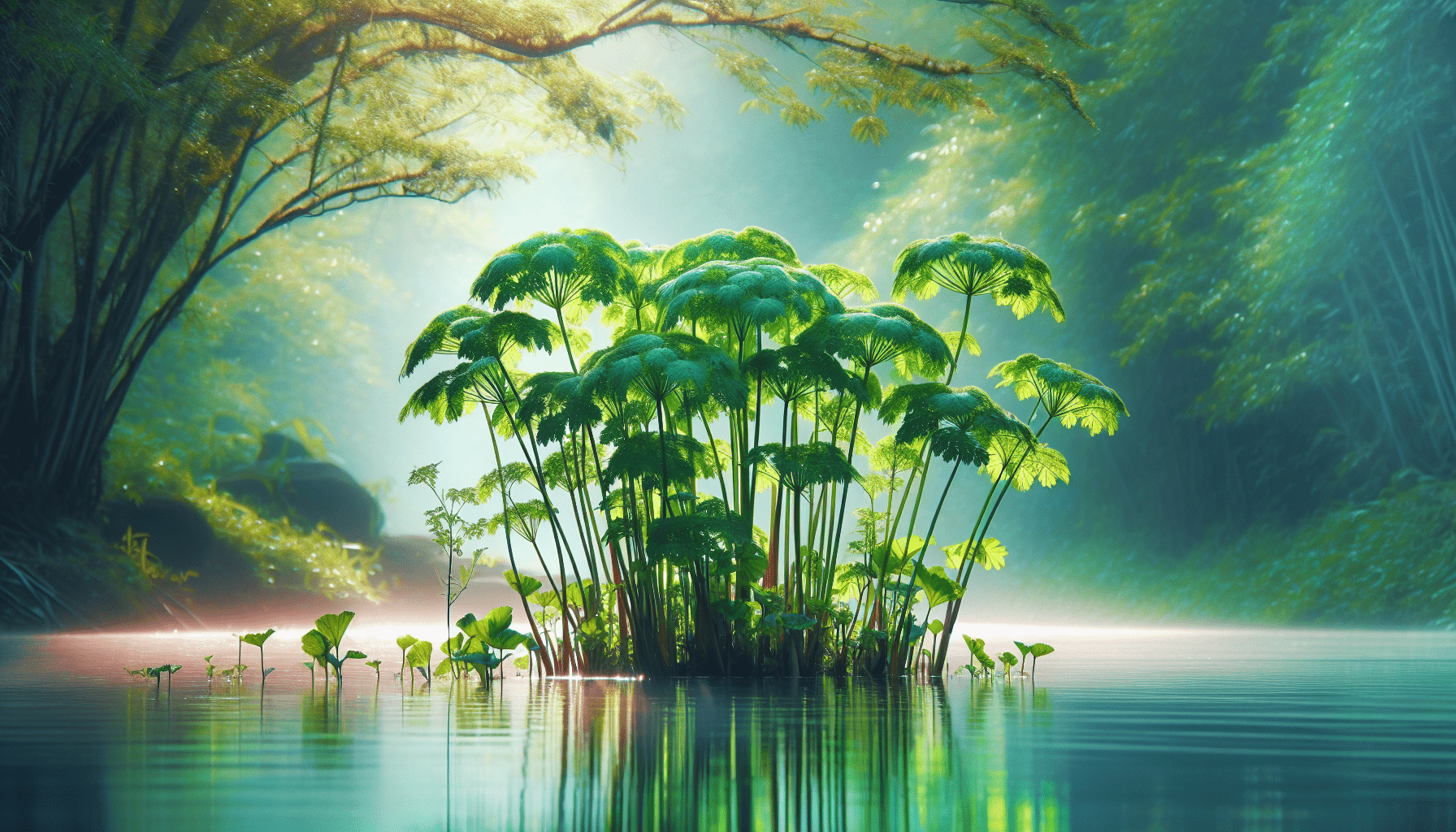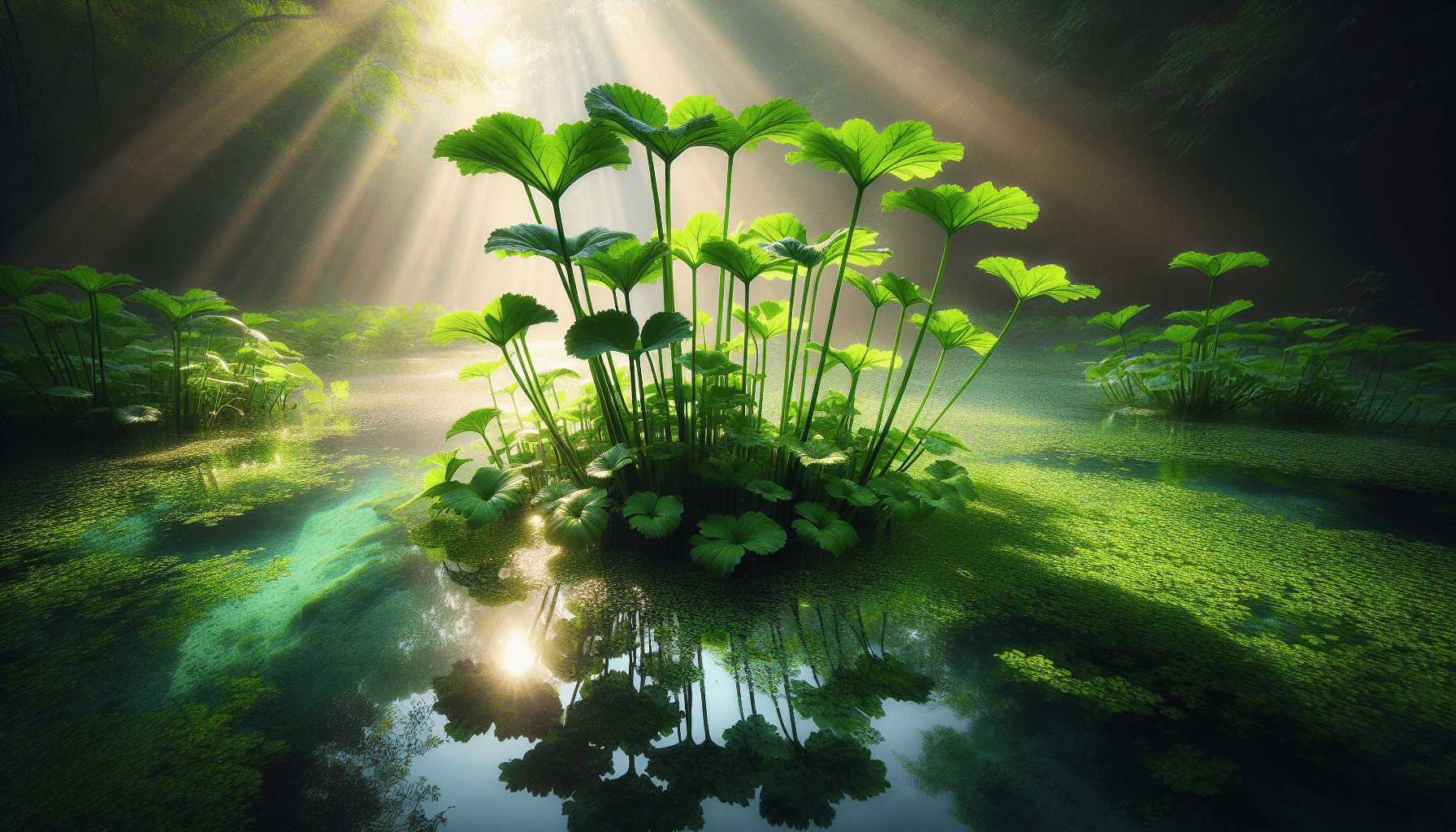As an inquisitive mind eager to unearth knowledge about the flora inhabiting our planet, you will undoubtedly find the exploration of the aquatic plant water parsnip compelling. This article seeks to shed light on this relatively unexplored flora, with a specific emphasis on its ecology, uses, and survival tactics in intricate detail. It provides an enlightening revelation into the water parsnip, further offering a heightened understanding about aquatic life and bio-diversity. Discover the intricate details that set apart this plant as not just another aquatic species, but as an integral component contributing to the balance of our natural world.

What is Water Parsnip
Water parsnip is an aquatic, perennial herb that typically thrives in wet habitats such as marshes, wet meadows, pond edges, and the banks of slow-moving streams and rivers. The presence of the plant is universally recognized as an indication of a healthy wetland ecosystem, being a common element in places where the natural balance of flora and fauna is preserved.
Definition of Water Parsnip
Water Parsnip can be defined as a semi-aquatic plant classified under the Apiaceae family. Its scientific name is Sium suave. In specific vernacular, ‘parsnip’ illustrates the plant’s shape resemblance with conventional parsleys, while ‘water’ suggests its preference for growing in environments with a high water concentration.
Scientific classification
The water parsnip belongs to the kingdom Plantae. The phylum or division is Tracheophyta, the class is Magnoliopsida, the order is Apiales, the family is Apiaceae, the genus is Sium, and the species is S. suave. This classification illustrates the plant’s connections to other well-known plants in the Apiaceae family, such as carrots, and queen anne’s lace.
Physical Characteristics of Water Parsnip
Water parsnip is a visually intriguing plant, encompassing a mixture of unique and usual botanical features. These physical properties can aid in its identification and distinguish it from similar species.
Growth habit
Water parsnip grows as a perennial, reaching an average height between one and two meters, establishing its dominance in the aquatic vegetation. The plant’s stem is hollow, smooth, finely ridged, and remains green throughout the year.
Leaf structure
The leaves of water parsnip are pinnately compound, typically double. They resemble the leaves of a celery plant, being similar in appearance and structure. Each leaf has between seven and twelve pairs of leaflets that are finely toothed.
Flower characteristics
Flowering typically occurs from July to September. The plant’s flowers are small, white, and arranged in a compound umbel, with short rays. This means the inflorescence is composed of several short flower stalks which spread from a common point, similar to umbrella ribs.
Root structure
Beneath the earth or water, water parsnip produces a deep, spindle-shaped taproot, which resembles a typical parsnip root. This root is a primary means of nutrient absorption and offers stability for the plant in the wet, often unstable ground where it grows.
Habitat and Distribution
Since water parsnips are an aquatic to semi-aquatic species, preference for wet locations is overwhelmingly obvious.
Observe where does Water parsnip typically grow
Typically, water parsnips are found flourishing in moist to wet soils and semi-aquatic environments. They occur often in marshes, swamps, fens, along rivers, and lake borders – places where they can have constant access to water.
Underlying conditions supporting its growth
The plant thrives well in full sun to partial shade and prefers neutral to mildly acidic or basic, nutrient-rich, soggy to submerged, sandy, loamy or clayey soils.
Global Distribution
Water parsnips are prevalent in North America, Eurasia and parts of Africa. In Canada and the United States, they usually grow in almost every state and province.

Similar Species
In the wild, water parsnip can be confusingly similar to other species in close observation or at a glance, particularly the poisonous water hemlock.
Comparison with Water Hemlock
Water parsnip and water hemlock bear a striking resemblance in size, colour, and general appearance. However, water hemlock’s leaf veins end between the teeth of the leaf margin, whereas water parsnip’s leaflets have veins ending at the notches. Also, water parsnip’s root lacks the poisonous chambers found in water hemlock.
Distinguishing Water parsnip from other aquatic plants
Water parsnip, among other aquatic plants, is unique due to its height, unusual leaf structure, flowering pattern and preference for growing in partially submerged areas. Differentiating it from other aquatic plants hinges on observation of its physical details and growth habit.
Life Cycle and Reproduction
Water parsnip’s reproductive strategy is designed to maintain its population in their preferred habitats.
Stages in Water Parsnip life cycle
The life cycle of water parsnip consists of the vegetative stage, flowering stage, fruiting stage and germination stage. The vegetative stage involves the growth of the parent plant, followed by the flowering stage between mid-to-late summer. The plants then develop fruits in the fall which are spread by water through the winter. The seeds germinate and grow into new plants in the early spring.
Mode of reproduction
Water parsnip reproduces via both vegetative propagation and seed dispersal. The plant forms colonies with individuals originated from the underground root system. Seeds, which are small and ribbed, are also produced and dispersed to colonize new locations.
Pollination strategies
Water parsnip attracts a wide range of insects, primarily small bees and flies, who pollinate the flowers while sipping the nectar, dispersing pollen and ensuring the genetic diversity of the species.
Ecological role
The presence of water parsnip within an ecosystem has a couple of beneficial implications – for the water bodies they exist in, as well as the fauna they interact with.
Role in the Ecosystem
Water parsnip is an excellent ecosystem stabilizer. The plant’s deep, thick roots prevent soil erosion in wet environments by absorbing excess water and holding the soil together. It also provides food and shelter to many animals, especially aquatic invertebrates.
Beneficial effects on water bodies
Its preference for marshy habitats means that water parsnip improves water quality by taking up excessive nutrients, thus preventing runoff and ensuring the water body’s health.
Interaction with Aquatic fauna
Water parsnip provides food and habitat for various kinds of wildlife, including insects, birds, and mammals. Nectar and pollen from its flowers serve as food for several bee species, while its leaves often host aphids that provide a food source for ladybugs and other beneficial insects.
Cultivation and Care
While typically growing in the wild, water parsnip can also be cultivated with careful attention to its specific growth requirements.
Seeding method
Seeds are typically sown in late winter or early spring in a cold frame. Once the seedlings are large enough, they are transplanted into individual pots and then sown outdoors in their permanent locations in early summer.
Water and sunlight needs
Unsurprisingly, this semi-aquatic plant requires a lot of water – the soil should be kept damp constantly. Further, the plant does well in full sun to partial shade.
Suitable soil type
Neutral to slightly acidic or alkaline, nutrient-rich and consistently moist to wet, sandy, clay or loamy soils tend to be the most productive for water parsnip.
Role in Human Life
While is not typically cultivated for commercial use, there are several direct references about its application in human lives.
Usage in folklore medicine
Folklore medicine practitioners had used water parsnip to attend to diseases including kidney disease, fever, coughs and colds, and issues related to childbirth and menstruation.
Culinary use of water parsnip
The roots of water parsnip were also used as vegetable by various cultures. In moderation, they have been described as a pleasant-tasting, slightly sweet and nutritious food source.
Potential Health benefits
As a result of its rich nutrition value, consuming water parsnip could contribute to good health. The plant is known to be a source of vitamin C, essential minerals, and fibre. However, due to potential complications related to misidentification with the similar-looking but highly poisonous water hemlock, it’s hardly recommended as a routine food source.
Potential Harmful effects
Although water parsnip holds numerous benefits, some caution requires in engaging this plant.
Toxicity in different parts of the plant
While not toxic itself, water parsnip can be easily confused with the deadly toxic water hemlock which is visually very similar. Consumption of the water hemlock, even in small amounts, can lead to death, thus making it extremely dangerous.
Negative impact on aquatic life
While generally beneficial to its ecosystems, dense colonies of water parsnip can sometimes hinder the growth of other plants or impede waterways, potentially impacting the habitat negatively.
Prevention and treatment of poisoning
The best method to prevent possible poisoning is to avoid using plants from the Apiaceae family unless you are absolutely certain of their identification. If a person is suspected of consuming water hemlock instead of water parsnip, immediate medical attention is necessary.
Conservation and sustainability
Sustainable engagement with water parsnip can be a step towards conservation of wetland ecosystems and biodiversity.
Threatened status and conservation efforts
Though water parsnip is not currently recognized as a threatened or endangered species, habitat degradation and loss present serious threats to the plant, and by extension, the organisms that depend on it.
Cultivating water parsnip sustainably
Sustainable cultivation of water parsnip includes limiting interference with the natural growing area, not overharvesting the plant, and preventing introduction of the plant into non-native regions where it could potentially cause invasive problems. Another important factor is constant monitoring to ensure the delicate balance of the aquatic ecosystem it thrives in isn’t upset. Planting water parsnip in created wetlands or water gardens can be beneficial to local biodiversity and water quality, and reduce the threat to wild populations.